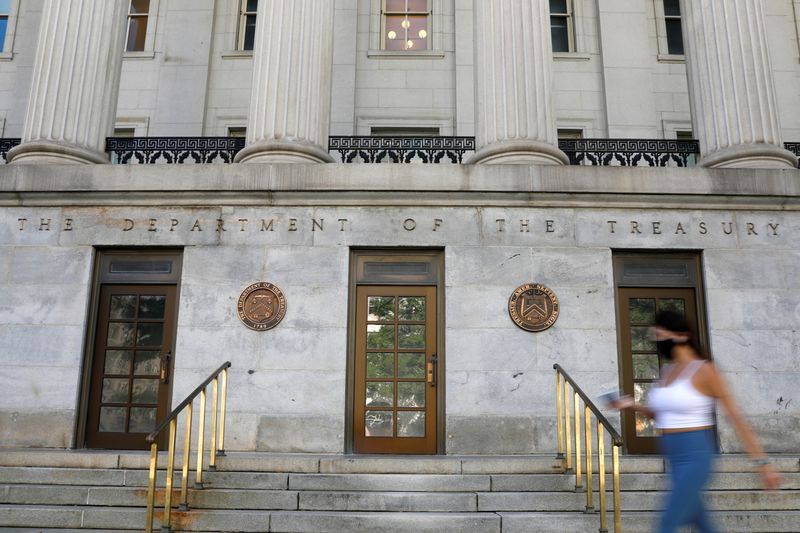(Bloomberg) -- U.S. Treasury yields are declining, most for a third straight day, amid signs that positioning for higher yields had become extreme, setting the stage for a snap-back.
Those signs amplified fundamental concerns about the potential impact on global growth of new Covid lockdowns in China, against the backdrop of interest-rate increases by the Federal Reserve and other central banks.
Two- to 10-year Treasury yields were lower by at least nine basis points, even as bond dealers prepared to underwrite an auction of new two-year notes at 1 p.m. New York time. Two- to five-year yields declined more than 10 basis points, the two-year to 2.53%. Longer-maturity yields declined less but reached the lowest levels in more than a week. The benchmark 10-year note’s yield declined as much as 9.7 basis points to 2.722%, the lowest since April 14.
“A lot of rate hikes are priced in and there is a big short base in the front end,” said John Brady, managing director at RJ O’Brien, a futures brokerage in Chicago. “There is a sense of fading Fed tightening expectations, and some accounts do see value in the two-year at 2.55%.” Large block trades in Treasury two-year futures initiated by buyers helped fuel the rally.
Economic data led by durable goods orders and consumer confidence were mixed, but an inflation gauge later this week may carry more weight. The core deflator for March personal consumption expenditures, the Fed’s preferred inflation gauge, is expected to moderate in Friday’s report, which Brady said is supporting Treasuries.
Economists surveyed by Bloomberg expect core PCE to rise 5.3% year-over-year in March vs 5.4% in February.
Long-dated Treasuries also are poised to benefit from month-end buying by pension funds. Strategists at Wells Fargo (NYSE:WFC) projected in a note Tuesday that U.S. defined-benefit corporate pension funds will add $4 billion to bonds, which “could extend the recent rally in the long end over the next couple of days.”
From a technical perspective, though, the 10-year yield may have difficulty sustaining a decline below 2.72%, corresponding to a 38.2% retracement of its April increase from roughly 2.31% to 2.98%. It depends, Stifel Nicolaus & Co. strategist Chris Ahrens said in a note, on “how big the short-base is that wants to cover prior to the May 4 FOMC” meeting, the U.S. central bank’s Federal Open Market Committee.
Bearish positioning mounted last week as Fed policy makers appeared to endorse market expectations for a half-point interest-rate increase on May 4, with swap contracts referencing Fed meetings dates also pricing in half-point increases in June and July, and a total of 250 basis points of additional rate hikes this year.
A one-sided short position has been built up in Treasuries, “driven by deleveraging activity” as flattener trades were “closed out in size last week,” Citigroup (NYSE:C) strategists Edward Acton and Bill O’Donnell said in a note. The bank’s model “continues to make the case for tactical mean-reversion as the one-sided short positioning in US Treasuries is extreme,” and bearish bets against the 10-year note will be under water should the benchmark yield fall below 2.68%.
While Tuesday’s rally cuts the expected yield on the $48 billion two-year note auction, it’s still on track to draw the highest two-year auction yield since early 2019, exceeding 2.5%.
“Any significantly strong auction result would hint that the hawkishness is approaching its height, whereas an unwillingness by primary market participants to set up and bid would suggest there is more room for the selloff to extend,” said Ian Lyngen, head of U.S. rates strategy at BMO Capital Markets in a note.
The price action extends a period of extraordinary volatility in Treasury yields. The daily range for the 10-year note’s has exceeded 15 basis points four times in April, compared with six times during the entire first quarter.
(Adds trader comment in fourth paragraph, detail throughout.)
©2022 Bloomberg L.P.
